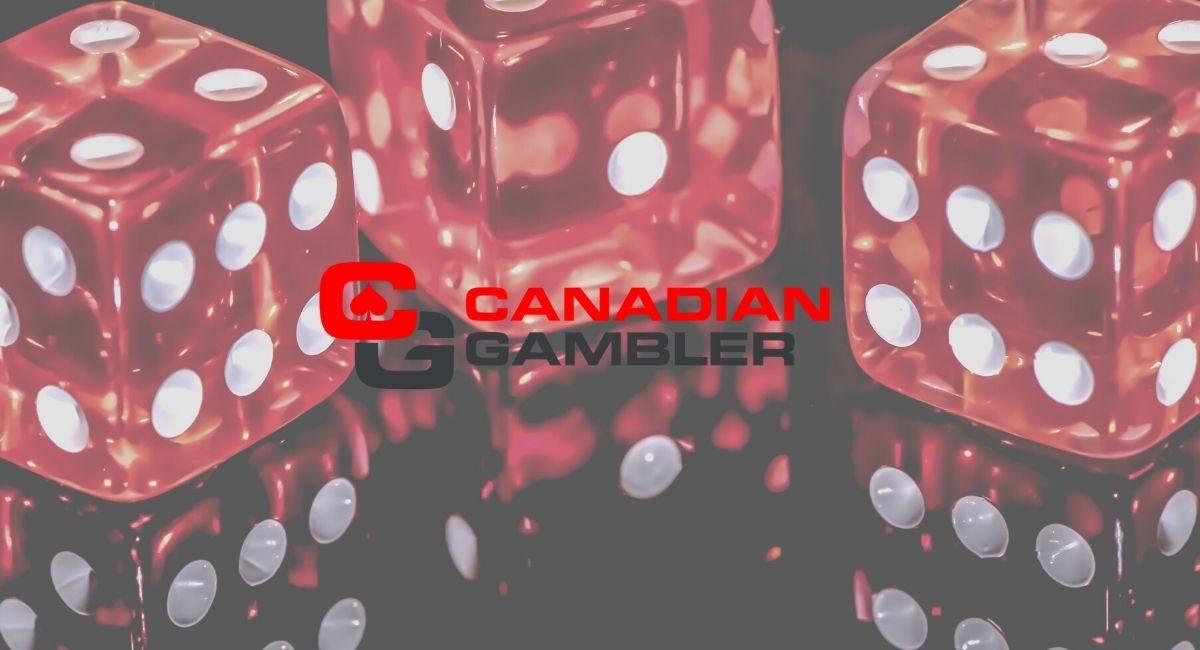Modern bookies have ditched the physical books once used for recording bets, but they have kept up and continued to improve on their original business model. You may not think it matters how it works, after all, you’re here to bet, not run the sportsbook.
Table of Contents
However, just because you are gambling, doesn’t mean you have to rely on luck alone. Knowing how odds are set, their relation to the implied probability and the models used can help you become more shrewd in your sports bets.
Read on for successful betting tips you can use next time you’re checking your preferred betting site and you’ll maybe score a winning bet!
Defining Bookmaker Odds and Probabilities First
Understanding how bookmakers calculate odds will give you insight on what to look for in offers, and what is worth betting on.
The most important thing to know in the first place, however, is how odds and probability differ when discussing them in terms of betting.
Probability is the likelihood that an event will take place – an estimate of the chance of that event occurring over the total number of chances available. In the event of a coin flip, there are two outcomes: heads and tails. These outcomes have a probability of ½, which can also be represented as 0.5 or 50%. In this example, there is an equal chance of either event occurring.
Statistically, odds represent the ratio of a player’s chances of losing to his or her chances of winning. Therefore in the above example of a coin flip, the chances of winning are 1 to 1, evens. In gambling, though, odds are usually the ratio of winnings to the bet made.
Notice that if a bookmaker were to use these numbers, they would effectively be placing as much of a gamble on the throw as the punter. Yet, bookies are not there to gamble, as they intend to make a profit. They do that by introducing a vigorish. Because of this, the odds on betting sites reflect the implied probability and not the real ones.
Vig/Vigorish, Edge, Juice, and Overround Explained
The vigorish is the long-run profit margin a bookmaker can expect when the risk-minimizing proportions of wagers are placed. Simply put, it can be thought of as a cut the sportsbook is taking for each bet made.
We can refer to the vigorish as the vig, edge, or juice – they all hold the same meaning. Overround will often get conflated with these terms, and although it’s related to them, it is a different concept.
The overround is the cumulative implied probability across all the odds and it adds up to above 100%. A total implied probability of 109% can also be expressed as an overround of 9%.
The vig and overround are how bookmakers set odds which ensure a profit is made, no matter the outcome of a game, by effectively factoring a cut of the wagers made into their odds.
Decimal Odds Versus Fractional Odds
There are 3 main ways of presenting odds: fractional, decimal, and American (moneyline) odds.
Fractional odds are popular in the UK and in horse racing, while decimal odds are common in other European countries, Australia, New Zealand and Canada. These both represent the same odds and can be easily converted from one to another.
Fractionals are expressed as x-y or x/y. They tell you the bettors’ winnings relative to their stake. So if a punter wins the bet, they will receive “x” units for every “y” unit bet, plus the value of their original wager. Let’s suppose you place a bet of 10 dollars on a horse race with fixed odds of 3-2. If your horse wins, you will receive CA$15 and your original stake back, a total of CA$25.
When expressing odds as decimals (D) they tell you the total payout when multiplied by your wager. If you want to see your winnings, you need to subtract the wagered amount from the result.
Using the formula D=y+x⁄y we can obtain a decimal odd from a fractional. The above example would be D=2+3/2=2.5 Hence, the decimal is 2.5 and for a stake of CA$10, the punter gets a payout of CA$25, just as the calculations in other types of odds already showed us.
Moneyline or American Odds
Moneyline odds are popular mainly among American punters, thus, they’re often referred to as American odds. They allow the player to bet on one particular outcome occurring – unlike spread betting – and they can be positive or negative.
Positive moneylines indicate an underdog. The odds tell you how much you win for a CA$100 bet. So, if the odds are +300, it means for every CA$100 you will win CA$300 and have a total payout of CA$400.
Negative moneylines are typical for favourites and they show you how much you need to bet to win 100. A moneyline of -190 tells us that you need to wager CA$190 to win CA$100 and receive a payout of CA$290.
When teams are evenly matched you may see negatives for both sides playing, due to the vig factored in with the odds calculated.
The Math Behind Odds Compiling
Modern bookmaking takes full advantage of technological advancements and sportsbooks have been employing odds compilers and analysts to assist in forming financial markets. Currently, odds compiling amounts to number crunching and using databases useful in setting odds.
Creating Statistical Models for Sports
Statistical models for sports originate from counting an event’s previous occurrences. When compiling data for a soccer team, you could count their home wins and away wins, or other criteria such as their home and away goals.
Bettors want to know the probability of an event so they can recognize the value in a bookmaker’s offer, and using their own statistical models to observe trends can give them an edge over the betting sites and help secure a win.
The Poisson Distribution for Modelling Sports
The Poisson distribution has stood out as the best soccer model, being able to make predictions with great accuracy. Knowing what it is and how it works can be very useful to punters.
The distribution gives us the probability of a certain number of events taking place in a specific time interval and may help when betting on match outcome, correct score, team goals and a number of other betting markets.
If you want to bet on the English Premier League, for example, you will need to gather information on the teams from its current season. Around halfway into the season, trends will already be set, and using a Poisson distribution model is likely to give you much more secure predictions than your intuition. There is a reason bookies started using statistical modelling.
Converting Odds to Implied Probabilities
Knowing the implied probability will tell you the overround and vig, and therefore the value of a bet.
Conversion methods will depend on the type of odds you use.
- If they are fractional – divide the denominator by the sum of the nominator and denominator. Multiply by 100 to get a percentage value
- If they are decimal – divide 1 by the odds. Multiply by 100 to get a percentage value
- If they are American – when using negative odds add 100 to the odds value. Then divide the odds by that sum. Multiply by 100 to get a percentage. When using positive odds, divide 100 by the sum of the odds value and 100. Multiply by 100 to get a percentage
We can use a tennis match where a draw is not possible to demonstrate the math.
Say player A has odds 1/5 – translating to 1.2 decimal and -500 moneyline. Meanwhile, player B has odds of 9/2 – being 5.5 decimal and +450 moneyline. The implied probability for player A comes out to 83.3%, and the implied probability for player B is 18.1%. This adds up to a total implied probability of 101.4%.
How Odds Compiling Works in Gambling
Odds compilers price markets mostly by working with data and analytics. This position used to require a person to have good intuition and insight to assess possible outcomes, however with the rise of technology this is no longer necessary.
Nowadays odds compiling is mostly outsourced and involves mainly running numbers through mathematical models.
Using Betting Odds to Calculate Probability
We already saw how to calculate implied probabilities. There is no way to know the true probability as perceived by the bookmaker. However, keep in mind a bookmaker is not without error and their true probability may not be an ideal calculation. You may be able to spot issues with an implied probability and use it to place bets more successfully.
Using Betting Odds to Calculate Winnings
Calculating potential winnings will depend on the type of odds used to bet. It is important to set a distinction between your winnings and your payout. Your payout will include your original stake.
Therefore if you’re using decimal odds multiplying your wager by the odds will give you your payout. Your winnings would then be that number minus the initial wager.
Fractional and American odds will tell you your winnings more directly. If your odds are 9/5, for every CA$100 you will get a winning of CA$180, and a total payout of CA$280. Same way, if your odds are +180, for every CA$100 bet you win CA$180, amounting to a total of CA$280.
How to Calculate a Bookmaker’s Profit Margin
Profit margins will usually be similar to those of other bookmakers to keep the market competitive. For successful gamblers, it’s better to bet on lower margins so you should look for the best odds among multiple bookmakers.
To bet on a lower margin, you will first need a way to know the bookmaker’s profit margin. This knowledge will allow you to take advantage of discrepancies and sometimes make arbitrage bets, assuring you a winning regardless of the outcome.
International tournaments could cause a bookie to lose money, as it makes it difficult to balance a book when most customers are going to put money that the national team wins. In such cases, many bookmakers may look to lay their liability with bookmakers from other countries through exchanging bets.
No matter the profit margin a bookie attempts to play, sometimes it is simply impossible to balance a book. In the particular event of a strong favourite such as in the Grand National, all bookies will be over-exposed and unable to exchange bets. In a twist of events, it turns out the house doesn’t always win.
Placing a double bet will compound the bookmaker’s profit margins for both individual games. This is why bettors will often be encouraged to place multiple bets with offers such as free bets or accumulator bonuses.
FAQS on How Betting Odds Work
How do odds prices move in response to betting?
For a guaranteed profit, fixed odds bookmakers will always want to keep their book balanced. This means the proportions bets made should mimic the proportions of the probability of each event.
If one match begins to attract a lot of bets, the bookmaker will want to balance the book by offering more favorable odds for the other outcomes and lowering the odds on the one that spiked.
What causes odds to change before events?
A bookmaker considers many factors before setting an initial price. However, they cannot consider something that has not yet happened. New information regarding team lineups, player injuries, etc. may cause odds to change. Apart from this, punters may choose to disproportionately bet on either outcome, forcing an odds change when the bookmaker attempts to balance the book.
What should I do if odds are listed in decimal and I usually use fractional?
Converting your odds from decimal to fractional can be easily done by hand or by using one of the many converters available online.
Are casino odds better than sports?
Yes, casino odds do tend to be better value for the player as they have lower margins.
In spite of this, casinos profit more from their patrons, as individuals will place a lot more bets in a single casino session than they would on sport bets.





